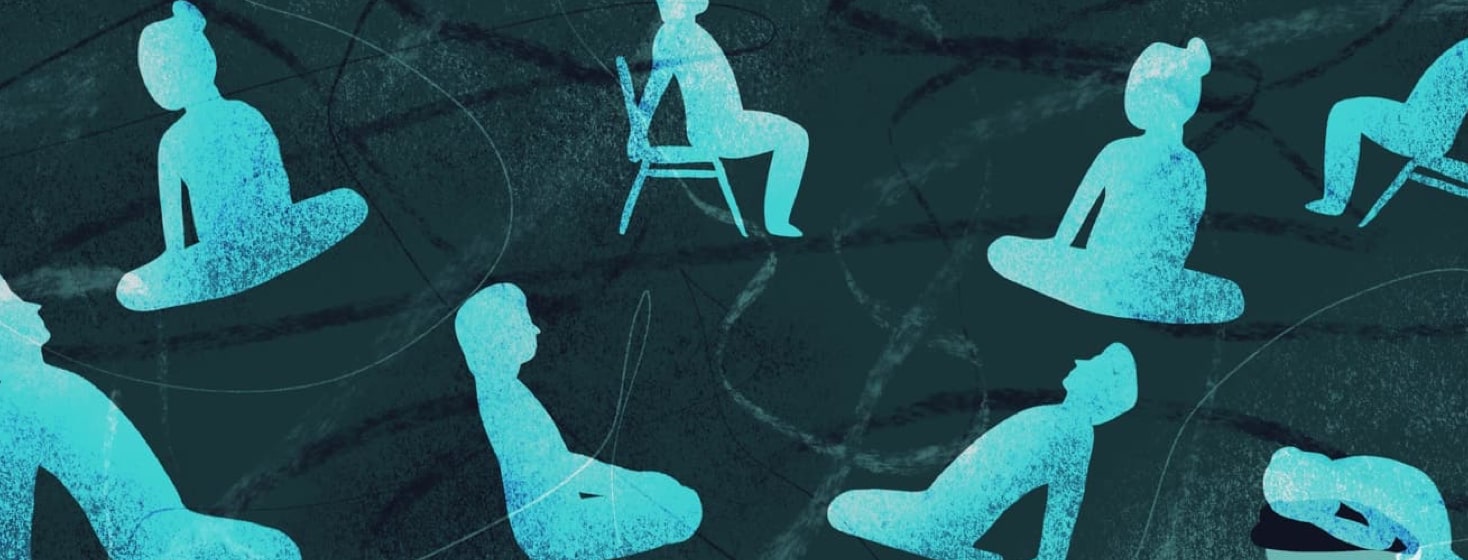I Tried "Yoga for AS"
Many years ago, I walked into a sweaty, crammed group yoga class on Saint Marks Place here in New York City. It was open to the public for a nominal fee and you did whatever the instructor had you do. Obviously, there was very little room for personal attention—and that's okay; that wasn't the nature of the space.
First, I loved that there was a community yoga class that I could take without paying an exorbitant fee, and I loved that I could just sort of show up as needed without joining a gym or studio.
However—and this shouldn't shock anyone—I noticed that the yoga community seemed quite exclusive. Not only the "culture" sometimes be judgmental and oddly competitive (which is downright antithetical to the practice, IMO), instructors in classes like these typically don't have the capacity to offer modifications for those who need it. Like many others, I also found it quite intimidating because I didn’t have a base knowledge of yoga. Pose names and breathing techniques — those were all new to me. I just wanted to keep up.
The two sides of wellness spaces
As someone who has taken dozens of group classes (from dance and boxing to pop pilates and aqua cycling), the health and wellness space really can go two ways; it can be empowering and inviting, or it can feel downright exclusive and intimidating. Add a chronic illness to the mix and you better hope it's the former. When you walk into a workout space, you're already managing your own expectations, fears, and limitations. The last thing you need is to feel unprepared, unwelcome, and confused.
But back to that original yoga class: It just didn't feel right for me. I noticed that many of the moves hurt. This was before I even realized I had ankylosing spondylitis, but my wrists and back were screaming in certain poses.
Learning my limitations
After I became diagnosed with AS, I knew that my body had some limitations. And it became clear in many different fitness group classes that instructors weren’t equipped to help me. Obviously, this isn’t their fault. They weren’t trained to work with people with a variety of musculoskeletal needs. Now I have to be much pickier when it comes to group workouts and workouts online
Fast forward to last week. I’ve been following Yoga for AS (run by Jamie Boder and Geoff Lindsay) for some time and wanted to give it a try. Recently, my life has been quite hectic between work and moving apartments, so I wanted to do something kind for my body to slow down and move gently. I was also curious to see how a yoga session would change if I took it with instructors who have the disease itself. (Not to mention, for anyone still uncomfortable with group classes during the pandemic—-this is a winner).
Bingo! Game changer. Not only were the kind folks at Yoga for AS extremely communicative about what to expect, they asked me about my needs for the day. Was I in a flare-up? Did I have any specific limitations? The people in the class with me were super kind, and it felt like a really soft, gentle, welcoming community.
Instructors who understand
It was amazing to me that I could be using my body with qualified instructors who completely understood me. I would recommend anyone with AS join their classes from time to time for gentle movement—especially those of you who are already interested in yoga. They have a multitude of live and virtual library courses and they cover different levels of experience and focus. As for their general demeanor and bedside manner, it couldn’t be better: kind, welcoming, informative, and compassionate.
Their goal: "Our vision is to show people with AS that they can practice yoga safely and effectively.It is clear that stretching, breathing, strengthening, relaxation techniques and mindfulness have the power to change the lives of people with AS. We want to show the world that with the right guidance and expertise yoga can work for you!"
As I return to some semblance of normalcy after my move, I expect that I will be attending sessions on a regular basis.

Join the conversation